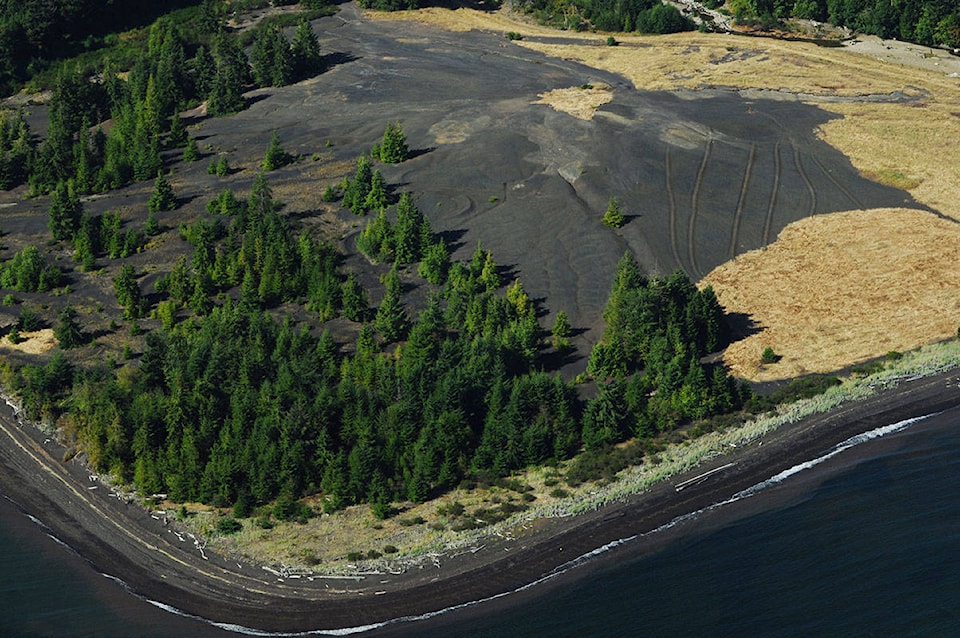The provincial government has revealed new information on the long-awaited plans for the Union Bay coal hills.
In April 2017, development company Kensington Island Properties (KIP) sold 28.32 acres of its land in Union Bay to the Ministry of Forests, Lands, Natural Resource Operations and Rural Development.
The land was sold for $1 and “other valuable consideration.”
Read More: KIP sells 28 acres of contaminated land to the province
The land transfer came as a surprise to many local residents. The 28 acres in question are located on the Union Bay coal hills — an area the B.C. government has recognized since 2012 as a “priority contaminated site.” The high sulfur content of the hills has resulted in acid rock drainage that has discharged metals into the Baynes Sound over the years.
Read More: Union Bay coal hills on priority contaminated site list in B.C.
Negotiations over the remediation of the coal hills have gone on for several years.
A recent Freedom of Information (FOI) request for a copy of the land transfer agreement between KIP and the province was denied.
According to the denied FOI request, withholding the transfer agreement was due to a “common law of settlement privilege,” which refers to protection of communications exchanged by parties as they try to settle a dispute.
Adjacent to the section previously owned by KIP, the rest of the coal hills is leased by the Crown to forestry company West Fraser Timber. The company’s lease expires later this year.
KIP had originally intended for its section of the coal hills to make up a portion of its golf course. After acquiring the land last spring, ministry staff said the province plans to erect a “green space” there once the area is eventually remediated.
An email to the Record from the ministry said that West Fraser Timber is “developing a detailed design plan for an engineered cover” at its own cost that will be submitted to the Ministry of Environment for review. The engineered cover will envelop the entire contaminated area.
When contacted, West Fraser Timber declined to comment.
According to the ministry, the engineered cover will impede water access to the coal pile, reducing acid rock drainage and the release of metals to the environment.
“After the engineered cover is installed, West Fraser will surrender its lease of the portion of the coal pile to the province,” reads the email. “In the event that the engineered cap doesn’t sufficiently reduce the level of metals being discharged, water treatment of the discharge may be required.”
The ministry told the Record the work is expected to be completed in 18–24 months.
The ministry’s email also stated that the entire coal hills will be considered undeveloped vacant Crown land and that any development in the area will be prohibited, including the growth or harvesting of trees.
The provincial government has confirmed it will be responsible for monitoring and maintaining the engineered cover, but questions still remain as to how much public dollars it could end up costing.
“While the cost to the province will not be known until after the detailed design plan is completed, the costs are not expected to be material on an annual basis,” reads the email. “Depending on monitoring results, a water treatment plant may need to be installed.”
Fanny Bay resident John Snyder, who is the former president of the defunct Coal Watch Comox Valley society, is worried taxpayers will ultimately end up paying for the coal hills’ clean-up.
“It’s going to have to be addressed at some point and I’m not sure who is going to pay for it. It’s going to cost a few bucks, for sure,” he said.
The Union Bay coal hills were originally used by Canadian Collieries (Dunsmuir) Ltd. as a washing and load-out facility for coal coming from the Cumberland mines. The hills’ contamination is due to residue from the industrial operations undertaken there.
